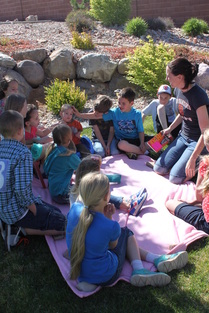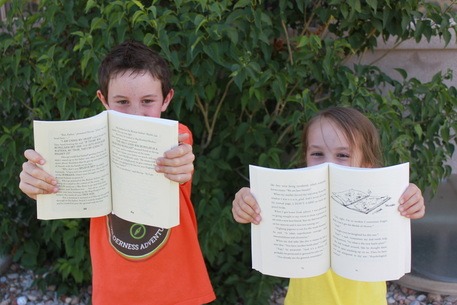A couple of years ago, I asked the faculty at my kids’ elementary school what they hoped their future classes would do over the summer. Every single one of them said these words, or a slight variation:
Read, Read, Read!
For some kids, this means handing them a library card or pointing them to the bookcase and letting them loose. For others, it’s a bit more challenging. But those are often the kids who would benefit most from a boost in their reading time. One of the best things I’ve done, for both my voracious reader and my slightly-more-reluctant reader, was to start a book club.
Regardless of how much (or how little) your kids are reading on their own, there are so many benefits to getting them involved in a book club. Kids often want to read what their friends are reading, and that’s sort of built into the book club model. They can talk about the characters and laugh about the funny parts and have this great shared experience through a book. They can have a deeper reading experience by thinking about the book after they’ve closed the cover. And they can use it as a launch pad to learn lots of cool new concepts from the story.
Starting a book club for your kids actually isn’t as daunting as it might seem. You can get yourself off to a great start by answering these four questions:

1. Who should I invite to be in the club?
The first thing to consider is who to invite to your book club. For me, the starting point was my son and daughter. I wanted kids they would feel comfortable with and have fun with, and also kids I knew would be enthusiastic and kind at our activities. I wanted a group that could fit in my living room, so we invited about 15 kids, assuming that a few would miss each time. As you pick your group, consider age, gender, reading level, family dynamics (we have several sets of siblings), and how much you’ll be counting on the other parents to pitch in. We ended up with a pretty diverse group, with boys and girls ages 5-12.
2. Who’s going to host?
The two main options here are having one host and rotating between all the members and their families. For the Backyard Book Club, I wanted to feature our books and activities on my blog each month, so for now, I’m doing all the hosting (with help from the other parents.) The other advantage is that this allows me to pick the books. There are definite and obvious benefits to sharing this load, though, and kids would probably love the chance to take a turn picking the book and playing the host.
3. What should the format of the meetings be?
For our meetings, I’ve tried to incorporate each of these elements:
- A (brief) discussion of the book. What was your favorite part? The funniest part? Did you like it? What other books did it remind you of? etc.
- A trivia challenge to see how well they remembered the book. This is a fun place to get creative–for example, we’ve had them excavate for book artifacts.
- A physical activity to get kids moving.
- A science activity to get them thinking.
- An art activity to get them creating.
- Treats. Not optional. 🙂 While they’re eating, I’ll usually read them a picture book that ties into the book we read and/or tell them a little about the next month’s book.
- Free time! After we’ve finished our activities, I give the kids whatever time is left of our two hour meeting to hang out and play and just become better friends. Definitely don’t stress about structuring every minute.

4. What should we read?
Lots of people will have ideas for this one, and they’re all worth taking into consideration! Ask your kids, the other parents, your kids’ teachers, and local librarians for suggestions. You’ll also want to consider the age of your members and the support they’ll have at home. If parents will have to read the books to their kids, be very conscious of book length. (Okay, it’s a good thing to be conscious of regardless.) Choose books that lend themselves to discussion and activities that you’ll be comfortable leading. And be conscious of cost–books that are only available in hardcover and in limited supply at the library might not work every month.
One final piece of advice: The more you involve your kids in every step of this process, the more enthusiastic they’ll be.
Good luck, and happy reading!
Additional Resources:
- Find links to all the books and activities we’ve done here.
- Check out advice from PBS Kids and Scholastic on this topic.
- Author Caroline Starr Rose also has some great advice on starting–and running–kid book clubs.
- Consider participating in programs like the Global Read Aloud or see if your local library has its own program to get kids reading as part of an even bigger group!
